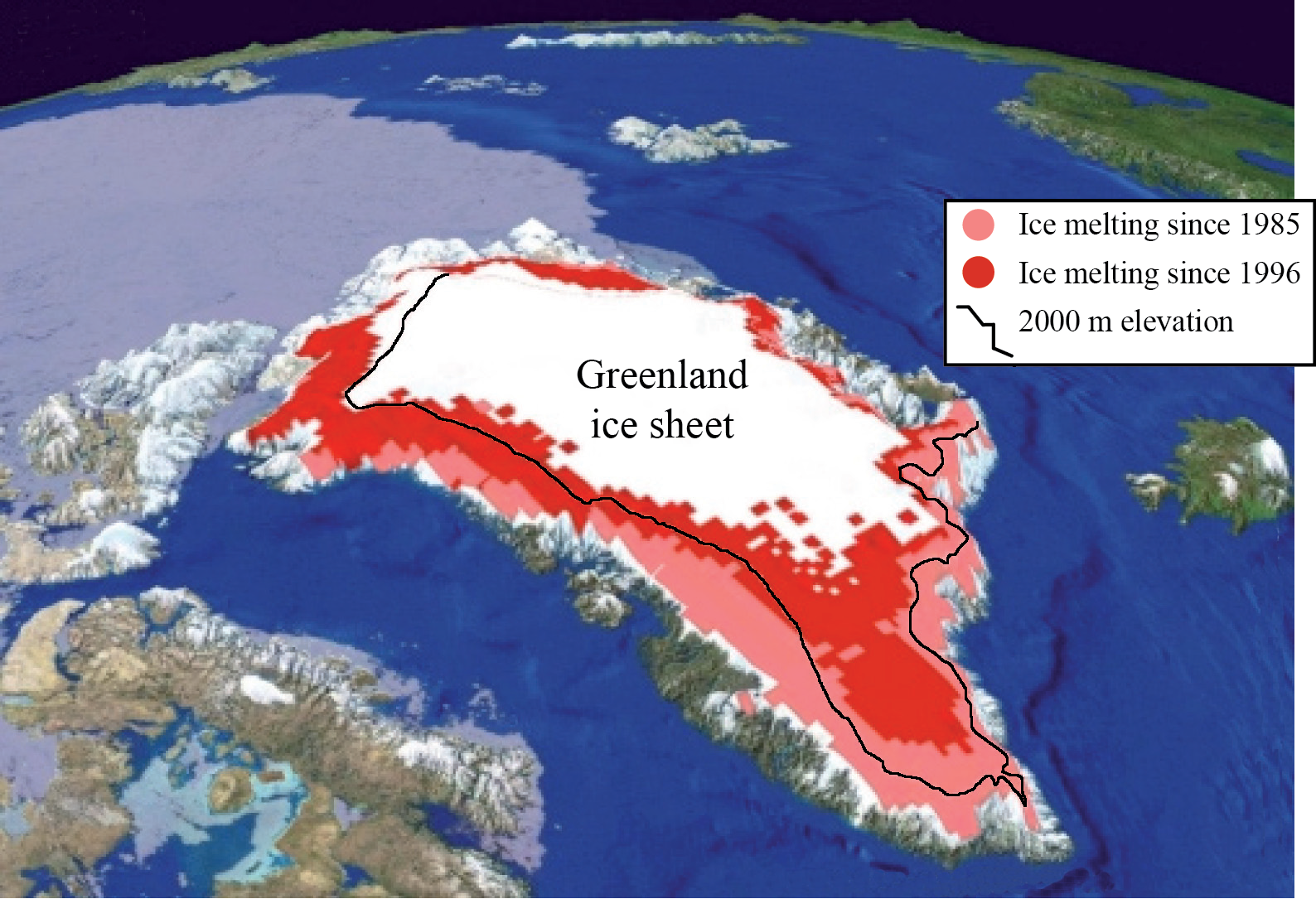| Date | May 2011 | Marks available | 4 | Reference code | 11M.2.bp.6 |
| Level | SL and HL | Paper | 2 | Time zone | |
| Command term | Describe | Question number | 6 | Adapted from | N/A |
Question
The image shows changes in the melting of the Greenland ice sheet.

[©University of Colorado CIRES, courtesy Russel Huff and Konrad Steffen]
Describe the changes that have taken place in the Greenland ice sheet since 1985.
Explain how and why glaciers and ice masses have sometimes advanced.
“Agriculture in hot, arid areas inevitably results in desertification.” Discuss this statement.
Markscheme
While the image shows an area where ablation exceeds accumulation, candidates can gain full marks even if they interpret this as ice retreat.
The ice has melted/retreated around the coasts [1 mark]. The greatest melt is in the south [1 mark]. There is greater melting in the west than the east [1 mark].
Attempts to quantify or relate to the 2000 metre contour or to consider change over time may gain the additional 1 mark.
Glaciers and ice masses advance when the accumulation of ice and snow [1 mark] exceeds [1 mark] the ablation of ice [1 mark].
Generally, this occurs when the climate is becoming cooler [1 mark], most likely due to natural causes, such as changes in the tilt or orbit of the Earth, sunspot activity, cosmic rays and changes in the position of land masses.
Award 1 mark for each of two causes if they are explained only briefly, or 2 marks for one cause explained in depth.
Candidates are expected to consider points on both sides of this question. The strongest responses may choose to challenge the statement, and may well conclude that while agriculture in such areas may result in desertification, such an impact is by no means inevitable but depends, in part, on the nature of the agriculture involved. Careful choice of crops, cultivation techniques and continuous monitoring may enable successful small-scale or commercial agriculture in hot arid areas. It is likely to be easier to avoid desertification in areas where irrigation is possible than in areas where, for financial, technological, or other reasons, irrigation is not possible.
Desertification is often the result of unsustainable farming, in which more minerals and nutrients are taken out of the soil than are replenished, or where the density of grazing animals exceeds the normal carrying capacity. Some experts also attribute desertification in some areas to on-going climatic change.
Answers that consider only one side of the question should not be credited above band D. It is expected that answers reaching bands E and F will offer supporting evidence and/or exemplification before arriving at a clear conclusion to the question.
Marks should be allocated according to the markbands.
Examiners report
In general, this was not answered very well. Surprisingly, there was relatively little on the spatial element, and little attempt at quantification.
Some candidates confused glacial advance and glacial movement. Candidates were generally quite good on accumulation and ablation but less confident on the reasons for these – apart from on an annual basis.
This attracted some excellent responses with a wide range of examples and reasons. The best answers gave both sides of the argument with support.
This topic was well understood and there were some excellent contemporary examples, though at standard level many responses simply described desertification and effects on named areas without providing a balanced discussion with regard to whether or not it is inevitable.

